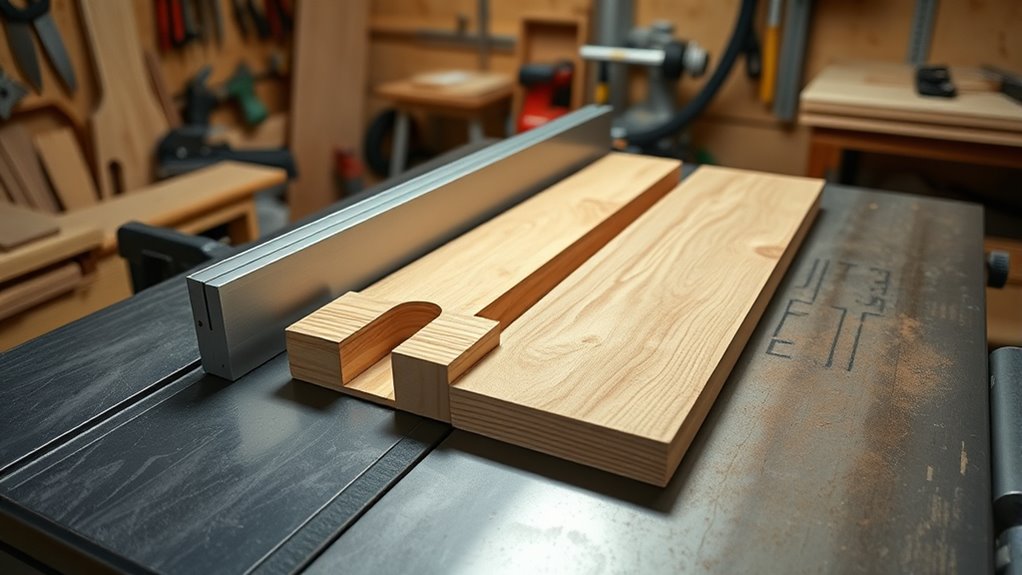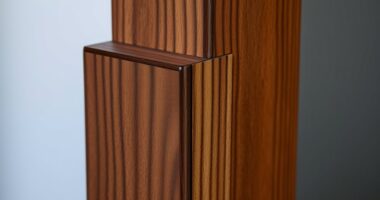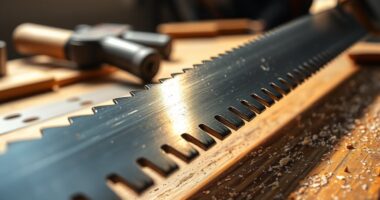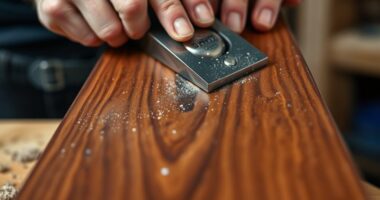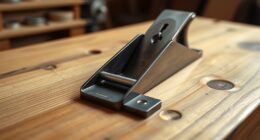To set up your table saw for precise box joints, start by choosing a dado blade with the correct width for your fingers. Adjust the blade height to match the thickness of your stock and lock the fence securely, aligning it square to the blade. Use a dedicated jig for consistent spacing and make test cuts to fine-tune the setup. If you want to master this process and achieve flawless joints, you’ll find detailed tips and techniques just ahead.
Key Takeaways
- Use a dedicated finger joint jig and set the fence precisely for consistent finger spacing.
- Match the dado blade height to the thickness of the stock for a snug fit.
- Secure the fence firmly and align it square to the blade before making cuts.
- Adjust the fence incrementally for each finger, verifying spacing with test cuts.
- Test fit all pieces after setup to ensure tight, seamless joints before assembly.
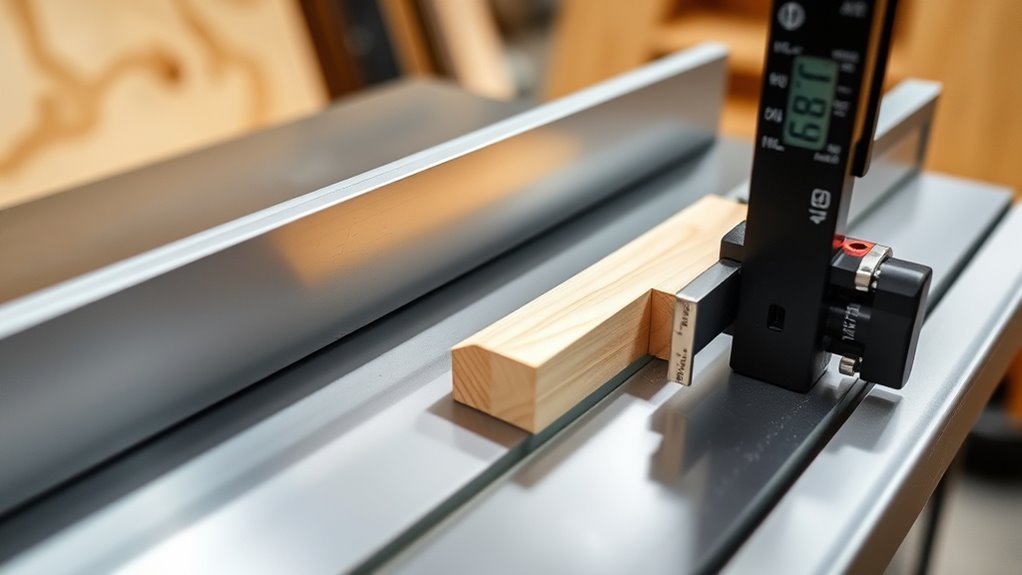
Box joints are a popular choice for creating strong, attractive connections in woodworking projects, and using a table saw is one of the most efficient ways to cut them accurately. To achieve perfect box joints, you need a precise setup that guarantees each cut matches the last, resulting in tight, seamless fingers. While many woodworkers turn to router bits for finger joints, a table saw can produce equally impressive results with careful adjustment and attention to detail.
Start by selecting the right blade and dado set for your table saw. A dado blade allows you to cut wide, consistent grooves for the fingers, but it’s vital to use the correct width for your desired joint size. Measure your stock thickness accurately and set the dado height to match, guaranteeing that the fingers will fit snugly without forcing or gaps. Precise measurements are key, so double-check all settings before making any cuts.
Choosing the right dado blade and setting the correct height ensures precise, snug-fitting box joints every time.
Next, set the blade height and fence carefully. The blade height should match the thickness of your wood, and the fence must be aligned square to the blade. Lock the fence securely at a consistent distance from the blade, which determines the width of each finger and slot. To create finger joints, you’ll need to incrementally move the fence for each pass, cutting a series of evenly spaced fingers. A specialized jig or sled can help maintain consistent spacing and alignment throughout the process.
For even greater accuracy, consider using a dado stack with multiple blades or a dedicated finger joint jig designed for table saws. While router bits are often associated with finger joints on routers, a table saw setup can produce similar results with the right fixtures. These jigs hold the stock firmly in place and guide the cut, minimizing errors caused by movement or misalignment. Using precise measurements and proper setup techniques is essential to ensure tight-fitting joints.
Throughout the process, verify each cut by test fitting your pieces. Fine-tune your setup as needed, adjusting fence position or dado width for a perfect fit. Consistency is vital—each finger should slide smoothly but firmly into its corresponding slot without force. This guarantees a tight, durable joint, whether you’re making a box, drawer, or other woodworking project.
Frequently Asked Questions
Can Box Joints Be Made Without Specialized Jigs?
You can make box joints without specialized jigs by using jig alternatives or DIY fixtures. For example, clamp a piece of scrap wood or a guide fence to your saw to keep cuts consistent. You might also use a template or a homemade sled to guide your cuts. While it requires careful setup and patience, these methods allow you to create precise box joints without investing in a dedicated jig.
What Safety Precautions Are Necessary During Setup?
It’s wise to treat your setup process as a dance with safety gear, ensuring every step is smooth and secure. Always wear eye and ear protection, and double-check your setup checklist before cutting. Keep your hands clear of the blade, and use push sticks when necessary. Taking these precautions minimizes risks, making your project safer and more enjoyable. Remember, a careful setup keeps accidents at bay.
How Do Material Types Affect Joint Precision?
Material types considerably impact joint precision because of differences in material stability and wood grain. You should select stable, well-seasoned wood to prevent movement during cutting. Grain direction affects how the material responds to cuts; cutting against the grain can cause splintering and inaccuracies. By understanding these factors, you can adjust your setup and technique, ensuring tight, accurate box joints regardless of material type.
What Maintenance Is Required for the Saw Blade?
Did you know a dull saw blade increases cutting effort by up to 30%? To keep your saw running smoothly, regularly check blade alignment to guarantee precise cuts. You should also sharpen the teeth when they become dull, ideally after every few uses or when you notice rough cuts. Proper maintenance prevents uneven cuts, reduces wear on your saw, and extends blade life, making your woodworking safer and more efficient.
Can These Techniques Be Applied to Other Woodworking Tools?
You can definitely apply these techniques to other woodworking tools. For dovetail alternatives, a router jig option offers precision similar to table saw setups. Adjusting guides and fences on routers can help you achieve accurate cuts, just like with the table saw. These methods improve your accuracy across tools, making your projects more consistent and professional. Experimenting with router jig options can expand your skills and streamline your woodworking process.
Conclusion
Now that you’ve mastered the precision setup for box joints on your table saw, you’ll find creating perfect fits becomes second nature. Think of your setup as the foundation of a sturdy house—without it, everything else might wobble. With patience and practice, your box joints will come out as clean and precise as a finely tuned instrument. Keep honing your skills, and soon, you’ll be turning out professional-quality projects that impress every time.
